Engaging Games for Learning to Tell Time at the Half Hour
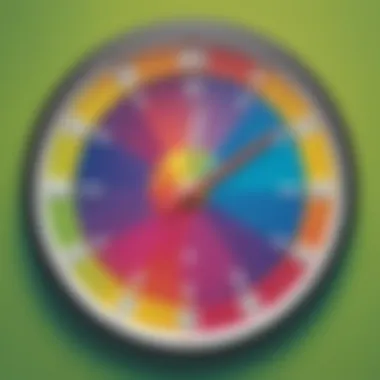
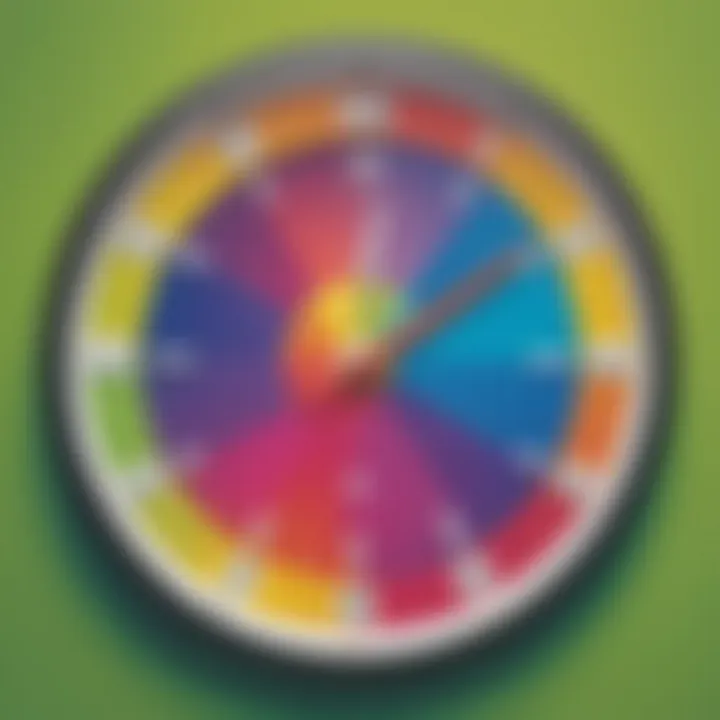
Intro
Understanding how to tell time is a foundational skill for young learners. The ability to read a clock and comprehend the passage of time becomes increasingly important as children navigate their daily lives. This article caters to elementary school students, their parents, and educators alike. It presents engaging games and interactive activities designed for teaching how to tell time to the half hour. The use of play not only enhances the learning experience but also ensures that children can grasp the concept more effectively.
Creative Activities
Educational activities can make learning more inviting for children. When it comes to teaching time, creative activities help solidify concepts in a memorable way.
Craft Ideas
Crafting allows children to express their creativity while learning. Here are a few ideas:
- Clock Faces: Provide children with paper plates and markers. Ask them to draw a clock face and label the hours. Then they can practice moving the hands to show different times.
- Time Telling Puppets: Use felt or paper to create puppets that represent different times, such as “It’s 2:30!” These puppets can engage children during lessons.
Step-by-Step Guides
- Create a Clock: To make a simple clock, gather materials like a cardboard circle, scissors, and brads. Cut out numbers and attach hands with the brad to allow movement.
- Labeling: Take time together to place numbers around the clock. This reinforces their positions and helps children remember them.
- Time Exercises: Use the clock to ask children to show specific times. For instance, “Show me 3:30.”
Educational Value
These craft activities help young learners practice telling time in a hands-on manner. They strengthen fine motor skills and encourage teamwork among peers as they craft and learn together.
Fun Quizzes
Quizzes can provide immediate feedback on a child’s understanding of time. They can also motivate learners to engage with the material actively.
Quiz Topics
Some engaging quiz topics include:
- Identifying times on analog clocks
- Matching digital times to analog representations
- Solving time-related word problems
Question Types
To maintain engagement, a variety of question types can be included:
- Multiple-choice questions
- Fill-in-the-blank format
- Short answer queries that require explanations
Knowledge Reinforcement
Quizzes reinforce learning by allowing children to assess their understanding. Immediate feedback can clarify misconceptions and strengthen their confidence in their abilities.
Fact-Based Articles
Reading is another important method to support learning about time. Fact-based articles, rich in content, can further enhance a child's understanding.
Topics
These articles may cover topics such as:
- The importance of time in daily life
- Historical perspectives on timekeeping
- Fun facts about time zones
Engaging Content
The content should be written in an engaging style that captivates young readers. Using simple language and visuals can help simplify complex ideas.
Prelims to Telling Time
Telling time is a fundamental skill that young learners must acquire, serving as a gateway to understanding the rhythms of daily life. It goes beyond simply reading a clock; it involves recognizing patterns, planning activities, and managing time efficiently. In this article, we will explore various engaging games and activities that make learning to tell time not just easy, but enjoyable. These methods allow children to connect with the concept of time in a practical way, fostering essential cognitive and social skills.
Understanding Clocks and Time-telling
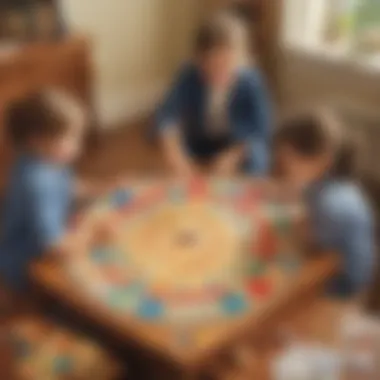

A clock is more than a tool for keeping time; it is a representation of how we structure our world. The two most common types of clocks are analog and digital. An analog clock displays hours and minutes using hands that rotate around a dial. In contrast, a digital clock shows time using numbers. Understanding these variations is crucial for children as they develop their time-telling capabilities.
When children grasp the basic mechanics of clocks, they learn to segment their day into manageable parts. This segmentation lays the foundation for recognizing hours and half hours. Knowing how to tell time aids in tasks such as arriving at appointments punctually or coordinating activities with peers.
The Importance of Learning Time
Learning to tell time has profound implications for children. It cultivates a sense of responsibility and autonomy. For instance, a child who understands how to read a clock can help their family adhere to schedules, contributing to household organization. This skill also enhances self-awareness, as children begin to understand the difference between 'now' and 'later.'
Moreover, mastering time-telling help children develop numeracy skills. As they engage with numbers on the clock face, they practice counting, addition, and subtraction in context. Telling time nurtures critical thinking as learners calculate durations or plan their daylight activities.
Through engaging games and structured lessons, we can help young learners build this foundational skill effectively. Educators and parents play a pivotal role in fostering an environment where children can explore and embrace the concept of time with confidence.
Half Hour Basics
Understanding the concept of the half hour is fundamental for young learners. It serves as a stepping stone in their journey towards mastering time-telling. Recognizing when it is half past an hour not only aids in practical time management but also reinforces their understanding of the clock's structure.
What Does 'Half Past' Mean?
When we say it is 'half past,' we refer to a specific moment in time. This occurs 30 minutes after the hour. For example, if the clock shows 2:30, we say it is half past two. At this moment, the minute hand points directly at the six, while the hour hand sits halfway between the two and three. This positioning creates a visual representation that aids children in grasping the concept.
Teaching the meaning of 'half past' involves several engaging strategies. Use a physical clock, or even a digital clock, to demonstrate how the time changes. Turn on activities that involve moving hands on a clock face. This can deepen their understanding through a hands-on approach.
It is essential to explain that 'half past' is the same concept for all hours. Therefore, children must apply the same principles whether it is half past one, half past five, or any other hour. This consistency simplifies the learning process and provides a clear framework for understanding time.
Identifying the Hour and Half Hour
Identifying the hour and half hour is crucial for young learners to develop their time-telling skills. Clocks may look complex, but breaking down their components into manageable parts aids in comprehension.
The hour is marked by the hour hand, which performs a full rotation every twelve hours. The half hour, on the other hand, indicates that thirty minutes have passed since the last hour. At this point, the hour hand is not yet on the next hour but is still making its way towards it.
To help children identify these points, teachers and parents can utilize various visual aids and interactive activities. For instance, they can use printable worksheets that require children to match the digital time to the analog representation. Consider incorporating games where children can point at clock drawings and identify times, reinforcing their learning in an enjoyable manner.
Engagement Tip: Encourage children to practice telling time by asking them to provide the time at specific hours and half hours throughout the day. This promotes real-world connections to their learning.
The Role of Games in Learning Time
Games hold a special place in the learning process. They are not just for entertainment; they provide various opportunities to develop critical skills in young children. When it comes to teaching time, especially to the half hour, interactive games play a vital role in enhancing comprehension and retention. This section discusses the specific elements that make games effective, the benefits they provide, and the considerations to keep in mind when integrating them into the learning process.
Why Games Enhance Learning
Using games in teaching time makes learning both effective and enjoyable. Engaging students through play taps into their natural curiosity and desire to explore. Some of the main benefits include:
- Active Engagement: Children are more likely to focus and participate when learning is presented in a game format. Games create an immersive experience that captures attention.
- Immediate Feedback: Games provide instant results, allowing learners to see their understanding of the concept quickly. This helps them identify areas needing improvement immediately.
- Social Skills Development: Many games require interaction with peers. This camaraderie fosters teamwork and communication skills as they learn to play and follow rules together.
- Encouragement of Problem-Solving: Games challenge students to think critically and strategize. This reinforces learning by encouraging thought processes about telling time and makes them apply what they know in new contexts.
- Positive Reinforcement: Successful play can boost self-esteem. When children achieve milestones in games, they feel accomplished, motivating them further in their learning journey.
“For many children, learning through play supports better understanding and long-lasting knowledge retention.”
Types of Games for Teaching Time
When teaching time, opting for various game types can cater to different learning styles. Here are some effective types of games that can be used:
- Board Games: Using board games with time-based themes can help learners recognize different times on a clock while having fun. Games like Time Telling Twister involve moving pieces around a game board that requires players to solve time-based challenges to proceed.
- Card Games: Simple card games can be designed where players match cards displaying different times. This can include hour and half-hour combinations, allowing learners to visually connect the two.
- Online Games: Interactive apps or websites that feature time-telling games also provide innovative ways to engage students. These platforms often come with varied difficulty levels, allowing customization to suit individual needs.
- Physical Games: Incorporating movement into learning can also be very beneficial. Games that require players to “find” times around the classroom or playground can turn learning into an active adventure.
- Role-Playing Games: Allowing children to role-play as timekeepers can be particularly effective. Assigning roles within a classroom can help reinforce the learning of both telling time and the responsibilities of managing it.
Integrating these game types in lessons on telling time can create multifaceted learning experiences. With proper utilization, games can significantly enhance children's ability to tell time effectively, making the learning journey both meaningful and memorable.
Interactive Games for Understanding Half Hours
Learning to tell time is an essential skill for young children. Engaging games can facilitate this process, making the experience enjoyable rather than daunting. Interactive games help to reinforce concepts of time by providing practical applications in a playful environment. Moreover, they allow children to practice repeatedly, which is vital for mastering time-telling to the half-hour.
Games that focus on understanding half hours not only promote retention but also encourage social interaction, critical thinking, and problem-solving. When children participate in group activities, they learn from their peers and develop communication skills. This element of play makes learning about time much more memorable.
In the following sections, we will explore three interactive game formats that effectively teach children how to identify and tell time to the half-hour, allowing educators and parents to choose the best methods for their individual learners.
Clock Matching Games
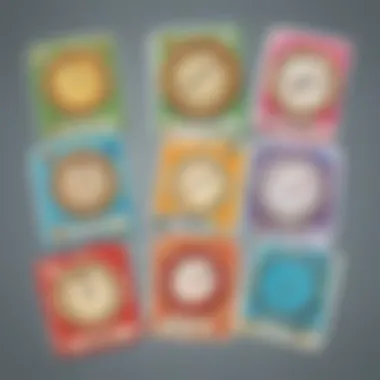
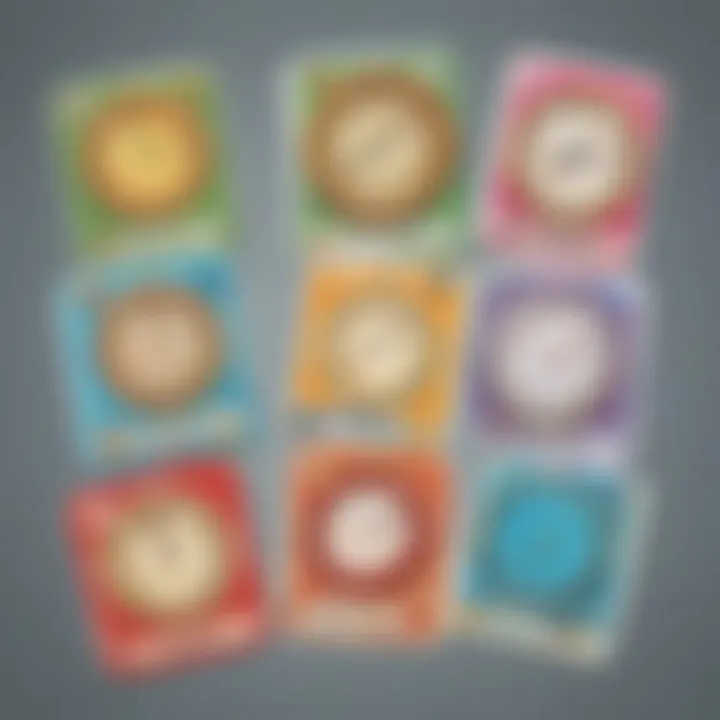
Clock matching games serve as a dynamic way for kids to relate written time to clock faces. In these games, participants often match cards with various clock images to their corresponding time labels, like “1:30” or “3:00.” This requires them to assess the hour and the half-hour, fostering a strong visual connection. Most importantly, these games allow children to practice in a low-pressure setting, reinforcing their understanding.
When creating or selecting clock matching games, consider the following:
- Use colorful images to attract the child's attention.
- Include varying time representations – both traditional and digital clocks.
- Vary difficulty levels to engage children at different stages of learning.
These elements will keep young learners motivated while facilitating targeted practice.
Time Bingo
Time Bingo is a fun twist on the classic Bingo game, substituting numbers for clock times. Each player receives a card with different times, and the caller announces times in a verbal or digital format. Children then check their cards for matches. This method encourages quick thinking and reinforces their ability to associate times with their corresponding images on the clock.
It is effective because:
- Groups can play together, enhancing teamwork and social skills.
- Visual pacing helps to sharpen listening and comprehension abilities.
- Various templates can fit diverse classroom themes or concepts.
To maximize learning, you may also encourage discussions about times called during the game, fostering deeper understanding further.
Time Board Games
Board games play a significant role in providing a structured and fun learning experience. In time board games, children often move pieces around a board while answering questions related to identifying half hours and the interactivities across the game. These formats create scenario-based challenges, prompting players to consider real-life time-telling situations.
Key considerations for effective time board games:
- Incorporate interesting themes that excite children, such as adventure or exploration.
- Use attractive visuals and materials to keep children engaged.
- Ensure rules are easy to follow while still presenting adequate challenges.
Through these interactive sessions, children not only learn to tell the time effectively, they also build patience, strategy, and cooperation skills, essential for their overall development.
Engaging with time-telling through games not only enhances understanding but also instills a love for learning. It creates memorable experiences related to skill acquisition.
DIY Time-telling Activities
DIY activities offer a hands-on approach for young learners to grasp the concept of time effectively. Engaging in these activities encourages creativity and critical thinking, essential for understanding how to tell time. Working with their own hands allows children to connect theoretical knowledge with practical application. This approach raises their interest in learning, making them more likely to remember what they learn.
When children create their own clocks or role-play as timekeepers, they engage with time in a personal way. This can make them more invested in understanding half-hour concepts. Furthermore, using simple materials often found at home helps in cultivating resourcefulness. Not only does this teach them about time, but also about creation, problem-solving, and improvisation. The benefits of DIY activities are vast, introducing a variety of skills while keeping the focus on telling time.
Creating Your Own Clock
Creating a clock is a practical exercise that reinforces how time is structured. Children can design their own clocks using basic materials like paper plates, markers, and brads. The process of making a clock involves multiple steps, from marking numbers to attaching hands. This not only develops fine motor skills but also deepens their understanding of the clock's function.
- Materials needed:
- Paper plates
- Scissors
- Markers
- Brads (fasteners)
To start, children can follow these steps:
- Use a marker to label the numbers 1 to 12 around the edge of the paper plate.
- Cut out an arrow from another piece of paper—this will be the hour hand.
- Find another arrow for the minute hand that is longer to indicate the half-hour mark.
- Attach both hands to the center using a brad, allowing them to move freely.
Once the clock is complete, children can use it to practice telling time. By physically moving the hands to show different times, they get a better understanding of what “half past” means.
Role-playing as Timekeepers
Role-playing is another effective DIY activity. This dynamic method fosters an engaging learning environment where children can take on the role of timekeepers. Such role-playing allows them to experience time management in a fun, interactive way. Assigning roles makes them feel important and contributes to their learning process. They can pretend to manage a busy schedule, using their handmade clocks to call out the time for different activities.
During these sessions, caregivers can set up scenarios that require they to tell time accurately. For example, they can take turns announcing activities associated with specific times. It could be something like:
- “It's half past two; time for a snack!”
- “It's half past three; let's read a story!”
By integrating these role-playing sessions into the learning schedule, children will become more adept at telling time, especially to the half-hour. This method encourages collaboration and reinforces their understanding of both vocabulary and concepts associated with time.
Incorporating Technology
In today’s digital age, incorporating technology into education can significantly enrich the learning experience for young children. This is particularly relevant for teaching concepts like telling time to the half hour. Technology elements such as apps and online games provide interactive, engaging methods to understand time. They transform what can sometimes be a challenging subject into a fun activity.
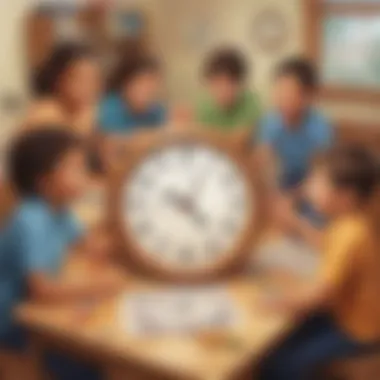
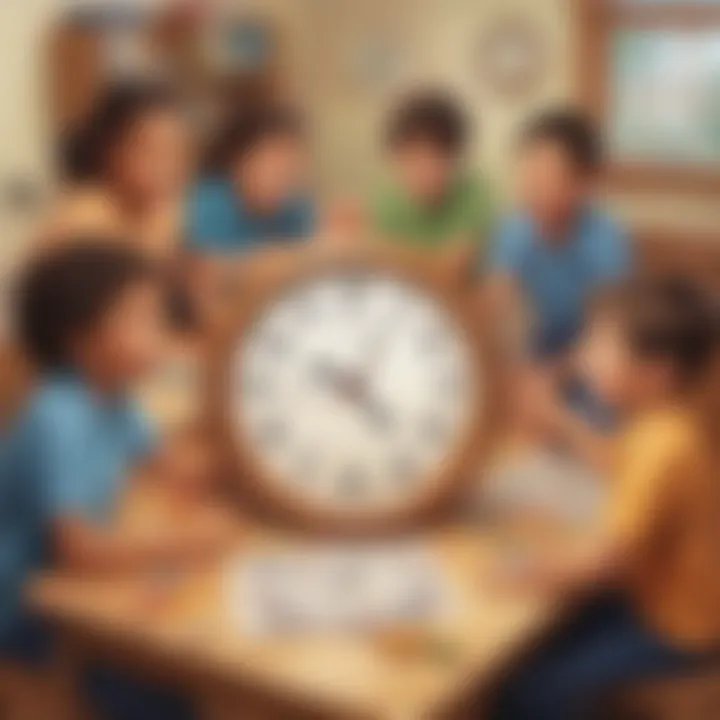
Benefits of blending technology with time-telling lessons include:
- Engagement: Children often find technology exciting. Apps and games can motivate them to learn in ways that traditional methods may not achieve.
- Accessibility: With a variety of devices, children can learn at their own pace. They can repeat exercises as needed or advance quickly through concepts they grasp easily.
- Visual Learning: Visual aids, such as animated clocks in educational apps, can aid in understanding how time works. Seeing the hands move on a digital clock can reinforce the idea of half past.
- Adaptability: Many educational apps cater to different learning styles, offering audio, visual, and kinesthetic learning. This customization can help accommodate various needs and preferences.
While technology offers many benefits, it is essential to consider a few factors:
- Screen Time: Moderation is key. Balancing screen use with physical activities is crucial for a child's overall development.
- Content Quality: Not all apps or games are created equal. Parents and educators should choose reputable resources to ensure children receive quality education.
Using technology thoughtfully in teaching time can lead to more effective learning experiences.
Educational Apps for Learning Time
Educational apps have been designed specifically to teach time-telling concepts, often through interactive play. Some of the key features of these apps include:
- Interactive Clocks: Many apps use digital or analog clock interfaces, allowing children to manipulate time visually. This can help them better understand the difference between the hour and half hour.
- Games and Quizzes: Engaging games make learning through practice enjoyable. Children can be tested on their knowledge in a fun way, helping retain information effectively.
- Progress Tracking: Many educational apps track a child’s progress, allowing parents and teachers to see improvement over time.
Examples of educational apps that focus on learning to tell time include Tell Time by Jumping Jellybean and Learning Clock by TeachersParadise. These apps focus on practical methods to teach children how to understand time in both analog and digital formats.
Online Games Focused on Time-telling
Online games provide another avenue to reinforce skills in telling time. They engage children in playful learning through competitive or cooperative elements. Here are some characteristics and types of online games suitable for learning time:
- Visual and Auditory Elements: Online games often combine visual cues with audio prompts. This can enhance learning by catering to different learning styles.
- Time-themed Puzzles: Many games feature puzzles where children must place clock hands correctly to match specific times.
- Time Races: Speed-based games challenge children to answer questions on time quickly, fostering not only knowledge but also quick thinking.
Some notable online platforms that offer time-telling games include PBS Kids and ABCmouse. These venues feature various games, each designed to make time-telling concepts clearer and more enjoyable for children.
Overall, integrating technology into teaching time enriches the overall learning experience, making a typically dry subject more lively and engaging for young learners.
Assessing Understanding of Half Hours
Assessing understanding of half hours is a crucial aspect of learning to tell time. It not only helps educators identify children's grasp of the concept but also allows for targeted instruction. This stage is essential as children begin to develop a foundational skill necessary for personal time management. The method of assessment should be varied to engage learners effectively and cater to different learning styles.
Quizzes and Worksheets
Quizzes and worksheets serve as important tools in evaluating students’ comprehension of half hours. They can be designed to assess both recognition and application. For instance, a simple worksheet may ask students to draw hands on a clock to show specific times, such as half past three or half past seven. This offers a practical approach to demonstrate their understanding visually.
Moreover, quizzes can incorporate a mix of multiple-choice questions and direct answers that reinforce their ability to read clocks. Here are some advantages of using quizzes and worksheets:
- Immediate Feedback: Quizzes provide instant results, which helps learners see where they might need more practice.
- Diverse Question Formats: Including various question types can appeal to different learners, making assessment more dynamic.
- Skill Reinforcement: Regular practice through worksheets can solidify understanding and help children retain information longer.
For effective implementation, educators can create quizzes that reflect the content of lessons. Solutions should be reviewed together, allowing educators to clarify any misunderstanding.
Observation and Feedback Techniques
Observation plays a vital role in understanding how well a child is learning to tell time to the half hour. Teachers can observe students during activities that involve clock reading, such as games or practical time-telling exercises. This method allows for real-time insights into each student's abilities and challenges.
When assessing students, the following techniques can be used:
- Direct Observation: Watching how students interact with clocks or engaging in games can reveal their level of comfort with the material.
- Peer Interaction: Encouraging students to explain time-telling to their peers can demonstrate mastery and understanding.
- Guided Feedback: Constructive feedback should be provided based on direct observation. Highlight strengths and areas needing improvement.
A final assessment can also involve a reflective discussion where students express what they have learned about telling time. This method reinforces their understanding while helping educators tailor future instruction based on student feedback. Overall, using a combination of these assessment strategies ensures a thorough understanding of half hours among young learners.
Culmination
Summarizing the Importance of Telling Time
Telling time correctly is a fundamental life skill that young learners must master. Knowing how to read a clock, especially to the half hour, equips children with the ability to manage their daily activities effectively. They learn to distinguish between hours and half hours, which aids in their understanding of schedules, appointments, and routines.
Furthermore, grasping this skill promotes independence. When children know how to tell time, they can organize their tasks and manage their free time wisely. This capability can positively influence their academic performance, as they learn to allocate their time appropriately to study and play. An understanding of time also enriches their social interactions since many activities and games have specific start times.
Incorporating games and practical activities enhances retention. When children engage in interactive play, they develop a personal connection to the learning material, making the knowledge more likely to stick.
Encouragement for Continued Learning
The journey of learning to tell time should not end with just the half hour. Encouragement is essential for children to explore further aspects of time-telling. Parents and educators should provide opportunities to expand their time comprehension by introducing other time increments, like quarters and specific minutes.
To keep the enthusiasm intact, vary the activities and games that focus on time-telling. For instance, using tools like clock apps or technology can provide fresh insights and experiences. Different contexts, such as cooking or playing sports, can also reinforce time concepts in real-life situations.
Importantly, celebrating small successes as children progress in their time-telling abilities fosters a positive learning atmosphere. Recognizing and praising their achievements in understanding time can promote a love for learning. Encouraging questions and discussions about time management can further stimulate their inquisitiveness and critical thinking skills.







